The Frisco Kid

Brief Synopsis
Cast & Crew
Lloyd Bacon
James Cagney
Margaret Lindsay
Ricardo Cortez
Lily Damita
Donald Woods
Film Details
Technical Specs

Synopsis
In the mid-nineteenth century, Spider Burke's men make a mistake when they try to shanghai sailor Bat Morgan. Bat overcomes his attacker and sends him off to sea in his place. With his earnings, Bat heads to Paul Morra's saloon on the Barbary Coast. There, he confronts the Shanghai Duck, a man who earns his living by selling men as sailors to ships heading for China. During their fight, Bat kills the Duck. Crusading newspaper editor Charles Ford, who witnesses the struggle, congratulates Bat for winning an unfair fight and for killing a worthless man. Impressed, Morra offers Bat a job. Under the sponsorship of politician James Daley, ambitious Bat organizes the Coast against Ford, who is fighting to clean up vice conditions there. Using the money he makes from the arrangement, Bat opens up his own saloon, which is elegant enough to attract society people. Tired of Ford's campaign against the Coast, Daley plans to kill him. When she learns of the plan, Jean Barrat, the owner of the paper, begs Bat to prevent the murder. Out of respect for Ford and love for Jean, he does. Although Jean returns Bat's love, she feels that they are separated by their different attitudes toward the Barbary Coast. In an effort to lure society people away from the Coast, Judge Crawford brings an opera company to town. Bat passes out tickets to everyone who works on the Coast. At the opera, Crawford insults Morra, who responds by killing him. Ford then declares war on the Coast and Daley kills him. Outraged by the murders, Jean runs an editorial calling for the organization of vigilantes. The vigilantes hang Morra and Daley and then move on to the Coast, burning down buildings as they go. The mob arrests Bat, intending to hang him until Jean passionately pleads for his life. Moved by her argument, the crowd agrees to parole Bat into Jean's custody, and at last Bat and Jean are on the same side.

Director

Lloyd Bacon
Cast
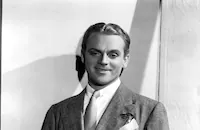
James Cagney

Margaret Lindsay

Ricardo Cortez

Lily Damita
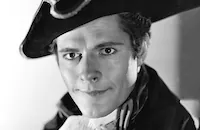
Donald Woods
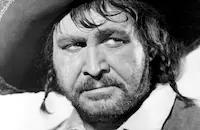
Barton Maclane
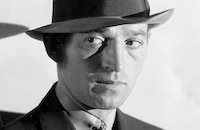
George E. Stone
Joseph King

Addison Richards

Robert Mcwade

Joseph Crehan
Robert Strange
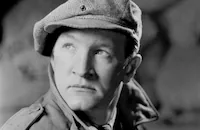
Joseph Sawyer
Fred Kohler

Edward Mcwade
Claudia Coleman

John Wray
Ivar Mcfadden

Lee Phelps
William Wagner
Don Barclay
Jack Curtis
Walter Long
Milton Kibbee
Harry Seymour
Claire Sinclair
Alan Davis
Karl Hackett

Wilfred Lucas
John T. "jack" Dillion
Don Downen
Mrs. Wilfred North
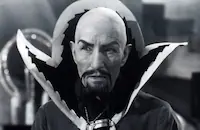
Charles Middleton
Landers Stevens
Frank Sheridan
Lew Harvey
Eddie Sturgis
William Desmond
Jessie Perry

Edward Keane
Edward Le Saint
Robert Dudley
Dick Rush
James Farley
Joe Smith Marba
James C. Morton
Harry Tenbrook
Estelle Taylor
Edward Mortimer
William J. Holmes
Crew

Film Details
Technical Specs

Articles
The Frisco Kid (1935)
It's an interesting character for Cagney, balanced as it is between the alpha dog determination of The Public Enemy's Tom Powers and the natural showmanship of Yankee Doodle Dandy's (1942) George M. Cohan. While Bat is the film's nominal hero, he's tough to actually like as his dog-eat-dog philosophy allows him to sell into conscription an unfortunate sucker somebody else has Mickey Finned. Bat does have a soft side, which he reveals to the high society lady (Margaret Lindsay) he loves and to the Yiddish tailor (George E. Stone) who once provided him refuge, but his redemption is far from being a done deal. Despite its antebellum blandishments (the muttonchops, the waistcoats, the hoop skirts), Frisco Kid has a contemporary thrust with Bat acting as a greed-is-good chancer who not only bullies his way into a majority share of the local vice racket but pushes through his brand in the form of a high class supersaloon with its own signature drink. However cold blooded Wall Street's reptilian Gordon Gekko may have been, he'd be no match for Bat Morgan, who proves as powerful a motivational speaker as he is a bucket of blood brawler.
James Cagney came to Frisco Kid after the unsatisfying experience of playing Bottom the Weaver in Max Reinhardt and William Dieterle's arty adaptation of A Midsummer Night's Dream (1935). Although he had received a recent salary increase from Jack Warner, Cagney was still dissatisfied with his roles during this period and approached the production of Frisco Kid with little enthusiasm. In Cagney on Cagney, the actor remembered it as "one of those catch as catch can affairs Warner's put out purely because they had to be put out... Frisco Kid had already been sold to the exhibitors even before a foot of it had been shot or conceived...The picture was built just the way a Ford sedan might have been."
The production marked his last pairing with frequent leading lady Margaret Lindsay, whom Cagney disliked for her affected cod-English manners. Born in Dubuque, Iowa, in 1910, Lindsay had used a phony British accent to bluff her way into a part in Fox's Cavalcade (1933). The actress was memorable as the gangster's moll who takes a bullet in the back while doing the right thing in 'G' Men (1935) and she enjoyed prominent roles in Jezebel (1938), The House of the Seven Gables (1940), Fritz Lang's Scarlet Street (1945) and as Ralph Bellamy's partner in crime detection in Columbia's "Ellery Queen" mystery series. Never married, Lindsay was rumored to have enjoyed a longstanding lesbian affair with Janet Gaynor.
Fleshing out the ranks of Frisco Kid's supporting cast are Donald Woods (13 Ghosts, 1960) as a crusading journalist, Ricardo Cortez (charismatic star of the original The Maltese Falcon, 1931) as Bat's affable rival, Barton MacLane (another 'G' Man alumnus) as the scarfaced Spider Burke and French actress Lili Damita, soon to marry Errol Flynn and bear him his only son. Look fast for Charles Middleton (Flash Gordon's Ming the Merciless) in the nonspeaking part of a vigilante.
James Cagney's fans were happy to see the actor back in two-fisted mode in Frisco Kid but critics were not so kind. Unflattering parallels were drawn between Howard Hawk's earlier Barbary Coast (1935), starring Edward G. Robinson, which the cognoscenti felt was the superior piece. Another nail in the film's coffin (at least as far as the press was concerned) was the release six months later of MGM's similar San Francisco (1936), starring Clark Gable as a slick Barbary ne'r-do-well. Among the admirers, however, was the critic for Variety, who praised Cagney's vigor and found Frisco Kid to trump the Hawks film. While undoubtedly a minor title in the Cagney curriculum vitae, the production does clip along, thanks to the brisk direction of Lloyd Bacon. Bacon had a reputation for speed, wrapping up his films in little more than two weeks. His personal best for set-ups in a single day came during the filming of Knute Rockne, All American (1940), when he completed 47 scenes in a single day. With Sicilian cameraman Sol Polito and art director John Hughes, Bacon etches the San Francisco waterfront as a fog-bound precinct of iniquity straight out of an Edgar Wallace novel. While hewing closely to the crime-shouldn't-pay maxims of the newly minted Production Code, the violence is often disarmingly brutal, with a double hanging late in the film being as disturbing as it is coyly elliptical.
Producer: Samuel Bischoff (uncredited)
Director: Lloyd Bacon
Screenplay: Warren Duff and Seton I. Miller
Cinematography: Sol Polito
Art Direction: John Hughes
Music: Bernhard Kaun (uncredited)
Film Editing: Owen Marks
Cast: James Cagney (Bat Morgan), Margaret Lindsay (Jean Barrat), Ricardo Cortez (Paul Morra), Lili Damita (Bell Morra), Donald Woods (Charles Ford), George E. Stone (Solly Green), Barton MacLane (Spider Burke).
BW-78m.
by Richard Harland Smith
Sources:
Cagney by Cagney by James Cagney
James Cagney: The Authorized Biography by Doug Warren
Cagney, The Story of His Film Career by Monty Clinch
Cagney, the Actor as Auteur by Patrick McGilligan
Cagney by Ron Offen
Cagney: A Biography by Michael Freedland
The Film Encyclopedia by Ephraim Kat

The Frisco Kid (1935)
Quotes
Trivia
Notes
The Variety review noted the film's similarity to Goldwyn's 1935 film The Barbary Coast. Motion Picture Herald mentioned the film marked silent screen star Estelle Taylor's return to the screen after a three year absence.















